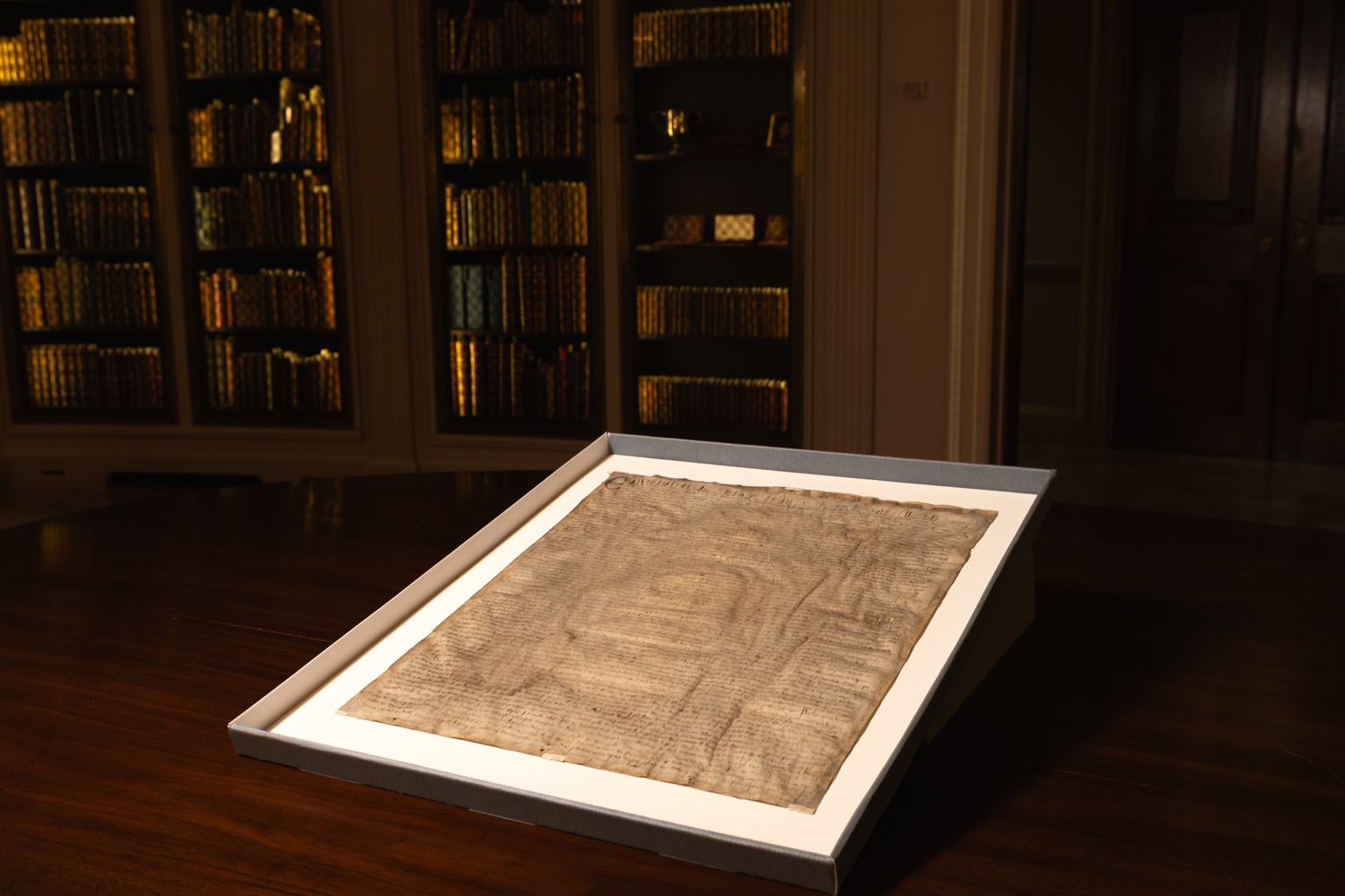Harvard Law School’s ‘Copy’ of Magna Carta revealed as Original

British researchers have discovered that a ‘copy’ of Magna Carta owned by Harvard Law School is in fact an extraordinarily rare original from 1300.
The discovery by leading Magna Carta experts from King’s College London and the University of East Anglia (UEA) means the document, which Harvard Law School acquired in the 1940s, is just one of just seven from King Edward I’s 1300 issue of Magna Carta that still survive.
Considered a key step in the evolution of human rights against oppressive rulers, Magna Carta has formed the basis of constitutions around the world. It was influential in the founding of the United States, from the Declaration of Independence to the framing of the U.S. Constitution and the subsequent adoption of the Bill of Rights.
The Harvard Law School Library bought the document known as ‘HLS MS 172’ in 1946 for a sum of $27.50, according to the library’s accession register. The auction catalogue described the manuscript as a “copy … made in 1327 … somewhat rubbed and damp-stained.” It had been purchased a month or so earlier by the London bookdealers Sweet & Maxwell, via Sotheby’s, from a Royal Air Force war hero for a mere £42.
Professor David Carpenter, Professor of Medieval History at King’s College London, describes HLS MS 172 as “a remarkable testament to a fundamental stage in England’s political development” and as “one of the world’s most valuable documents.”
“This is a fantastic discovery,” he said. “Harvard’s Magna Carta deserves celebration, not as some mere copy, stained and faded, but as an original of one of the most significant documents in world constitutional history, a corner stone of freedoms past, present and yet to be won.”
Professor Carpenter was studying unofficial copies of Magna Carta when he came across the digitized version of HLS MS 172 on the Harvard Law School Library website and realized it might be an original document and not an unofficial copy. He began to compare it to other originals to establish its authenticity and teamed up with Professor Nicholas Vincent, Professor of Medieval History at the University of East Anglia, to investigate its provenance.
Professor Vincent described Magna Carta as “a totem of liberty, central to our sense of who we are: a freedom-loving, free-born people”.
He added: “It is an icon both of the Western political tradition and of constitutional law. If you asked anybody what the most famous single document in the history of the world is, they would probably name Magna Carta.
“The provenance of this document is just fantastic. Given where it is, given present problems over liberties, over the sense of constitutional tradition in America, you couldn’t invent a provenance that was more wonderful than this.”
“While there are deep benefits to the digital revolution, a physical artifact like this one offers a special and profound reminder of the ways in which the rule of law, and the societies and people it serves, has, in fits and starts, grown and strengthened over a span of centuries,” said Jonathan Zittrain ’95, George Bemis Professor of International Law and Harvard Law School’s vice dean for Library and Information Services.
“The work we do in the law, and pass on to new generations of students, is not simply the consistent application of logical principle. It’s understanding how rare and precious self-governance across many differences can be, and how important it is to preserve and deliver upon it.”
“Congratulations to Professors Carpenter and Professor Vincent on their fantastic discovery,” said Amanda Watson, Harvard Law School’s assistant dean for Library and Information Services. “This work exemplifies what happens when magnificent collections, like Harvard Law School Library’s, are opened to brilliant scholars. Behind every scholarly revelation stands the essential work of librarians who not only collect and preserve materials but create pathways that otherwise would remain hidden.”
In establishing the authenticity of HLS MS 172, Professor Carpenter and Professor Vincent noted that its dimensions at 489mm x 473mm are consistent with those found in the six previously known originals, as is the handwriting, with the large capital ‘E’ at the start in ‘Edwardus’ and the elongated letters in the first line.
They also collated the seven previous originals with one another and discovered that a new text of Magna Carta had been prepared, with the clerks being given strict instructions to stick to it. This set a high bar for HLS MS 172 because if its text varied from the authorized version, it would not be genuine.
Using images obtained by Harvard Law School librarians via ultraviolet light and spectral imaging, Professor Carpenter and Professor Vincent discovered that HLS MS 172 passed the test “with flying colors,” with its text matching up perfectly with that in the other originals.
“This uniformity provides new evidence for Magna Carta’s status in the eyes of contemporaries,” explained Professor Carpenter. “The text had to be correct.”
Tracing HLS MS 172’s journey to the U.S., Carpenter and Vincent believe the document could be a lost Magna Carta once issued to the former parliamentary borough of Appleby in Westmorland, England.
They reveal that the manuscript was sent to auction in 1945 by the First World War flying ace, air vice-marshal Forster ‘Sammy’ Maynard CB. Forster Maynard, it emerges, inherited archives from Thomas and John Clarkson, leading campaigners against the slave trade from the 1780s onwards.
In the early 1800s Clarkson retired to the English Lake District, where he became a friend both of English poet William Wordsworth, and of local landowner, William Lowther, hereditary lord of the manor of Appleby.
From Appleby via the Lowthers, the Clarksons and Forster Maynard, Harvard’s Magna Carta has followed an extraordinary route, with the cause both of liberty and of slavery’s abolition at the very heart of that journey.
Main Image: Magna Carta Courtesy of Lorin Granger/Harvard Law School
